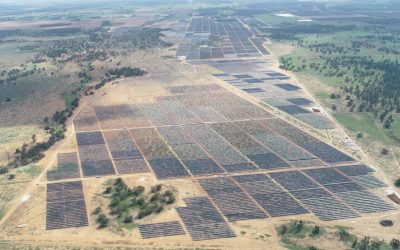Water Quality in Buildings – What you might not know?
Drinking water quality management requires a ‘catchment to tap’ approach. Physical, chemical and microbiological hazards can arise at almost any point in the supply chain before the customer turns on the tap and takes a drink.
But in practice, it is difficult to truly implement a catchment to tap approach, and instead we usually settle for ‘catchment to water-meter’. Why? Because this is all that falls within the control of most water service providers. Internal plumbing systems are often left alone, and problems are only picked up if they are visible to the customer (e.g. corrosion, or potentially taste and odour changes).
In recent times, there has been an increasing recognition of water quality hazards beyond the meter and into the property. These can include metal corrosion (including from brass fittings containing lead), organic solvents ‘leaching’ through polyethylene pipe, backflow of contaminated water from one area of a property to another, and many others.
Possibly the most recognisable hazard to most people is Legionella pneumophila, a bacteria that loves lukewarm water, absence of chlorine and still conditions. If inhaled (e.g. in the shower) it can lead to Legionnaire’s disease, a pneumonia-like condition which can be particularly dangerous to the elderly, immuno-compromised, smokers and others with chronic lung disease. This subset of the population is also the most vulnerable to COVID-19.
But why bring that up here?
How does COVID-19 relate to water quality in plumbing systems?
Well, it doesn’t directly – the virus SARS-CoV-2 is almost certainly not present in treated drinking water.
However, we have seen a huge shift in population movement and building occupation over the past month or so. Many more people are working from home, and many office buildings or other places of business are essentially empty, or are only visited by a fraction of the usual number of workers. And while this may happen to some extent every year during the Christmas to New Year period, the COVID-19 social distancing measures have been in place for a longer period now and will likely continue for some time yet.
With this in mind, we would expect that the water age within many buildings will increase, and this will cause the disinfectant in the water supply to reduce more than it normally would. This could allow biofilms to grow, and potentially allow harmful or nuisance microorganisms to establish themselves. Metals such as copper, zinc and lead are also likely to increase in concentration if there is lower turnover. If your building has old pipes, it is probable that some of the metals could be at levels above the relevant health guidelines.
So, as a building manager or occupant – what should you do?
If there are some people still in the office, they should run the water for a few minutes from taps each morning to try to turn over the building water supply – this will only truly be effective if there is enough water to flush all the pipes. This is reasonable advice all the time, but is especially important now to refresh the water.
If your building is currently unoccupied, and will be for the next few weeks, when you return, you will need to run a lot of water through all fittings where people will drink to refresh the water supply. If you have the ability to measure chlorine coming into the building, you need to flush until you detect it coming out of the taps (noting that in some cases the water coming into the property may not contain measurable chlorine – you can check this by testing for chlorine at the closest tap to the incoming water supply).
And finally, don’t forget to flush out the under sink hot water systems and coffee machines too! Water quality can definitely impact the flavour of your morning cuppa…
Author Credit
Dr Michael Lawrence and Sean Hinton






